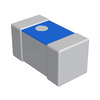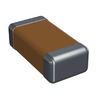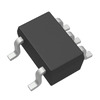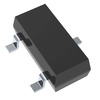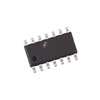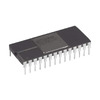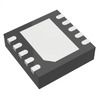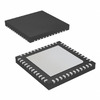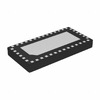Exploring the 2N3904S Transistor: Specifications and Applications
The 2N3904S transistor, a reliable and versatile component, has earned its place as an active element in numerous electronic applications. From signal amplification to efficient switching, its robust performance continues to meet the demands. In this post, we will explore the key features, technical specifications, and practical applications of the 2N3904S, offering insights that bridge academic understanding with actual use. Whether you’re designing circuits or seeking to enhance your knowledge, this comprehensive guide aims to illuminate the value of this requisite transistor.Catalog

2N3904S Transistor Overview
The 2N3904S-RTK/HU, offered by KEC, is an NPN bipolar junction transistor (BJT), becoming a mainstay in diverse electronic fields. Celebrated for its steadfast performance, the 2N3904S is readily available on our platforms. This device classifies as a Triode/MOS Tube/Transistor/Bipolar Transistor - BJT.
The 2N3904S finds broad usage in low-power switching and amplifying scenarios. It shines in managing moderate current and voltage levels, fitting seamlessly into a myriad of circuits such as signal amplification, switching, and digital logic applications. It stands as an active element in numerous electronic tools, embedding itself in both consumer and industrial products.
KEC emphasizes the 2N3904S's adaptability and dependability. Their dedication to quality and steady supply guarantees their parts align with tough industry criteria. Feedback frequently matches KEC’s assertions, demonstrating the transistor's efficiency in both straightforward and intricate applications.
2N3904S Transistor Description
The 2N3904S is a versatile NPN Bipolar Junction Transistor (BJT) extensively utilized for amplification and switching in a variety of electronic circuits. Its cost-effectiveness and compact size make it a beloved component in electronic projects and industrial applications.
The 2N3904S operates across a wide frequency range and efficiently manages currents. It handles a collector current of up to 200 mA and a collector-emitter voltage of 40 V. This makes it suitable for audio amplifiers, voltage regulators, and logic circuits. The transistor excels in enhancing weak signals into stronger outputs, a feature highly valued in audio amplifier circuits. In voltage regulation, it stabilizes voltage levels, used for sensitive electronics.
2N3904S Transistor Technical Specification
|
Type |
Description |
|
Product
Type |
Transistors,
General Purpose Transistors |
|
Vce
Saturation Pressure Drop |
300mV |
|
Operating
Temperature |
+150℃ |
|
Installation
Type |
- |
|
Collecting
Emitter Breakdown Voltage Vce (Max) |
40V |
|
Transistor
Type |
NPN |
|
DC Current
Gain (hFE) (Min & Range) |
100 |
|
Transition
Frequency |
300MHz |
|
Collector
Current Ic |
200mA |
|
Power
Dissipation |
350mW |
|
Power
(Watts) |
350mW |
|
Collector-Emitter
Voltage VCEO |
40V |
|
Polarization |
NPN |
|
Part
Life Cycle |
Active |
|
Height |
1.00mm |
|
L x
W/Size |
2.93
x 1.30mm |
|
Country
of Origin |
Korea |
|
Original
Manufacturer |
KEC
Corporation |
|
Brand |
KEC |
|
Lead
Free or Not |
Yes |
|
Part
Status |
Active |
2N3904S Transistor Features
The 2N3904S stands out due to its NPN configuration, which facilitates efficient current amplification and switching. This transistor is cost-effective and widely available, making it a popular choice for various applications. Its small TO-92 package allows for seamless integration into compact circuit designs, an alluring feature in contemporary electronics where space optimization often dictates design choices.
High Current Gain and Amplification
An outstanding characteristic of the 2N3904S is its high current gain (hFE up to 300), which significantly enhances its capacity to amplify weak input signals. This is especially beneficial in audio applications, where the strength and clarity of the signal are dominant. The high gain ensures that even the slightest input variations can be effectively amplified without substantial loss, preserving the originality of the signal. It frequently relies on such transistors to maintain high-fidelity sound reproduction in audio equipment, embodying a dedication to authentic sound experience.
Signal Fidelity and Low Noise
The low noise attribute of the 2N3904S plays a basic role in ensuring signal fidelity, especially in sensitive electronic applications. For example, in precision measurement equipment, low-noise transistors are used for maintaining measurement accuracy and reliability, where even the smallest distortion can lead to substantial errors. This reveals the transistor’s adeptness at delivering consistent performance in scenarios where signal purity cannot be compromised.
Versatile Handling Capabilities
The 2N3904S can handle currents up to 200 mA and voltages up to 40V, expanding its utility across a range of electronic projects. This robustness enables its use in applications from simple switching circuits to more complex signal-processing tasks. For instance, in microcontroller-based systems, this transistor ensures efficient management of switching needs, contributing to the system's overall harmony. Such versatility is especially valued where power management and efficient signal processing are heavily analyzed and rewarded.
Applications of 2N3904S Transistor
Signal Amplification
The 2N3904S transistor excels in signal amplification by enhancing weak audio inputs for outputs like speakers and headphones. Building robust audio systems often leverage this feature, ensuring perceptible amplification of even the faintest sound signals. This versatility forms the cornerstone in designing efficient audio circuits. In addition, applications such as acoustic equipment and communications devices, the 2N3904S ensures clear sound transmission by amplifying low-level audio signals without substantial distortion. Such reliable amplification evokes a sense of satisfaction seeking to maintain sound purity.
Switching in Digital and Analog Circuits
Within both digital and analog circuits, the 2N3904S operates effectively as a switch, proficiently controlling currents for components like relays, LEDs, and motors. For instance, it can activate a relay to handle high-voltage circuits through low-voltage logic signals, bridging the gap between low-power digital systems and high-power analog devices. This switching capability supports efficient energy management and precise control, which is required in applications like automated lighting systems and robotics motor drivers. Implementing such switches in complex systems offers a deeply fulfilling experience by harmonizing diverse electrical components.
Voltage Regulation
The 2N3904S stabilizes output voltages in power supplies and battery chargers by adjusting the base current, ensuring consistent operational performance. In practice, power supply circuits using this transistor maintain a stable voltage output under varying load conditions, used for sensitive electronics needing steady voltage to operate reliably. This consistent performance imparts confidence in power management systems. Ensuring a reliable power supply contributes significantly to the longevity and efficiency of electronic devices, bringing you a sense of achievement.
Oscillator Circuits
In oscillator circuits, the 2N3904S generates specific frequency waveforms ultimate in timing applications and signal processing requiring precise frequency generation. For instance, in communication devices, exact oscillation frequencies are required for signal modulation and demodulation. Observations in the field show that the reliability and precision of oscillators utilizing the 2N3904S enhance the performance of these devices. Employing this transistor in oscillator circuits brings a feeling of pride, knowing the device will meet stringent performance benchmarks.
IC Design and Current Mirrors
During IC design, the 2N3904S forms current mirrors useful for precise current regulation. These mirrors ensure circuits maintain constant current levels irrespective of voltage fluctuations, dangerous in analog signal processing and other high-precision applications. Actual implementations in integrated circuits often rely on the stability provided by 2N3904S-based current mirrors for accurate function. Crafting such circuits brings intellectual satisfaction in creating complex systems that function seamlessly under varying conditions.
Logic Gates and Sensor Interfaces
The 2N3904S aids in constructing basic logic gates and sensor interfaces by amplifying signals from temperature, light, and pressure sensors, enabling accurate signal processing and data acquisition. In environmental monitoring systems, the transistor’s ability to amplify weak sensor signals ensures reliable readouts and responses. Its versatility in interfacing with various sensors is invaluable in modern electronic applications. Managing these interfaces can evoke a sense of accomplishment, knowing that the system reliably interprets and processes environmental data.
Conclusion
The 2N3904S transistor stands as an active component in the electronics field, valued for its affordability, compact design, and robust performance across a wide range of applications, including signal amplification, switching, and voltage regulation. Its versatility makes it a go-to choice in low-power applications with high-frequency response and manageable power dissipation. Frequently used in oscillator and timer circuits, the 2N3904S enhances design efficiency and reliability, proving useful from prototyping to mass production. Its stability simplifies circuit design, making it a trusted component in both educational settings and commercial products. With advancements in semiconductor technology, the 2N3904S continues to maintain its relevance, emphasizing its role as a cornerstone in modern electronics.
Frequently Asked Questions [FAQ]
1. How to use the 2N3904S transistor in a circuit?
To effectively employ the 2N3904S transistor, connect its collector, base, and emitter terminals to the appropriate points within your circuit. Ensure the base-emitter junction is forward-biased to regulate current flow between the collector and emitter. This generally requires applying a small voltage of around 0.7V for silicon transistors, fostering the current flow through the base-emitter junction, which subsequently controls the larger current between the collector and emitter.
Consider load resistance, input impedance, and required amplification when optimizing transistor performance for applications like signal amplification and switching. The selection and configuration of biasing resistors significantly influence the desired current and voltage levels, with empirical adjustments and iterative testing often providing greater precision.
2. Where can I purchase the 2N3904S transistor?
The 2N3904S transistor is accessible through various distributors and marketplaces. Online platforms such as Digi-Key, Mouser, and Amazon offer this transistor, often with bulk purchasing options. Local electronics stores, including specialty suppliers, also stock this commonly used component. Comparing prices, verifying authenticity, and confirming specifications are prudent steps to ensure the component meets your project's requirements.
About us
ALLELCO LIMITED
Read more
Quick inquiry
Please send an inquiry, we will respond immediately.
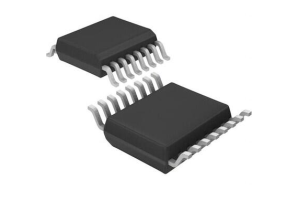
Exploring the Melexis MLX91221KDF-ABF-120-RE Current Sensor
on October 3th
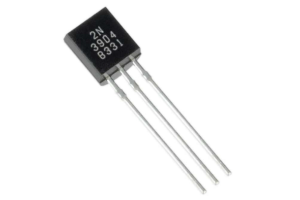
2N3904 Transistor Guide: Features, Uses, and Complete Datasheet
on October 3th
Popular Posts
-

What is GND in the circuit?
on January 1th 2933
-

RJ-45 Connector Guide: RJ-45 Connector Color Codes, Wiring Schemes, R-J45 Applications, RJ-45 Datasheets
on January 1th 2488
-

Fiber Connector Types: SC Vs LC And LC Vs MTP
on January 1th 2080
-

Understanding Power Supply Voltages in Electronics VCC, VDD, VEE, VSS, and GND
on November 8th 1874
-

Comparison Between DB9 and RS232
on January 1th 1759
-

What Is An LR44 Battery?
Electricity, that ubiquitous force, quietly permeates every aspect of our daily lives, from trivial gadgets to life-threatening medical equipment, it plays a silent role. However, truly grasping this energy, especially how to store and efficiently output it, is no easy task. It is against this background that this article will focus on a type of coin cell battery that may seem insignificant on the...on January 1th 1709
-

Understanding the Fundamentals:Inductance Resistance, andCapacitance
In the intricate dance of electrical engineering, a trio of fundamental elements takes center stage: inductance, resistance, and capacitance. Each bears unique traits that dictate the dynamic rhythms of electronic circuits. Here, we embark on a journey to decipher the complexities of these components, to uncover their distinct roles and practical uses within the vast electrical orchestra. Inductan...on January 1th 1649
-

CR2430 Battery Comprehensive Guide: Specifications, Applications and Comparison to CR2032 Batteries
What is CR2430 battery ?Benefits of CR2430 BatteriesNormCR2430 Battery ApplicationsCR2430 EquivalentCR2430 VS CR2032Battery CR2430 SizeWhat to look for when buying the CR2430 and equivalentsData Sheet PDFFrequently Asked Questions Batteries are the heart of small electronic devices. Among the many types available, coin cells play a crucial role, commonly found in calculators, remote controls, and ...on January 1th 1537
-

What Is RF and Why Do We Use It?
Radio Frequency (RF) technology is a key part of modern wireless communication, enabling data transmission over long distances without physical connections. This article delves into the basics of RF, explaining how electromagnetic radiation (EMR) makes RF communication possible. We will explore the principles of EMR, the creation and control of RF signals, and their wide-ranging uses. The article ...on January 1th 1533
-

CR2450 vs CR2032: Can The Battery Be Used Instead?
Lithium manganese batteries do have some similarities with other lithium batteries. High energy density and long service life are the characteristics they have in common. This kind of battery has won the trust and favor of many consumers because of its unique safety. Expensive tech gadgets? Small appliances in our homes? Look around and you'll see them everywhere. Among these many lithium-manganes...on January 1th 1500

